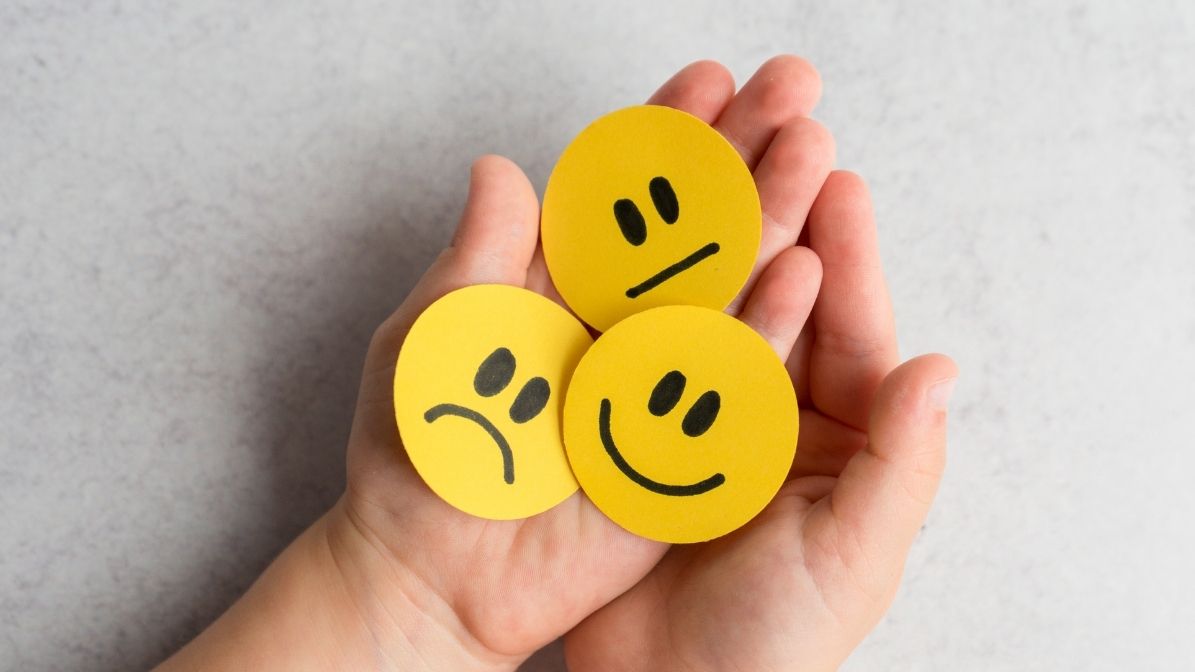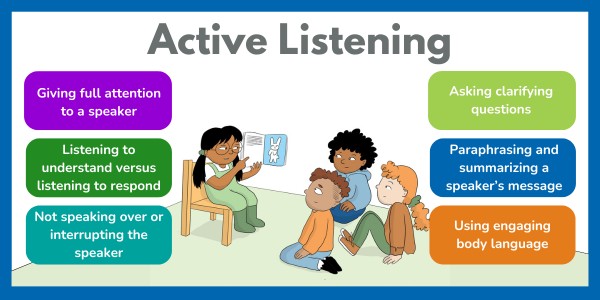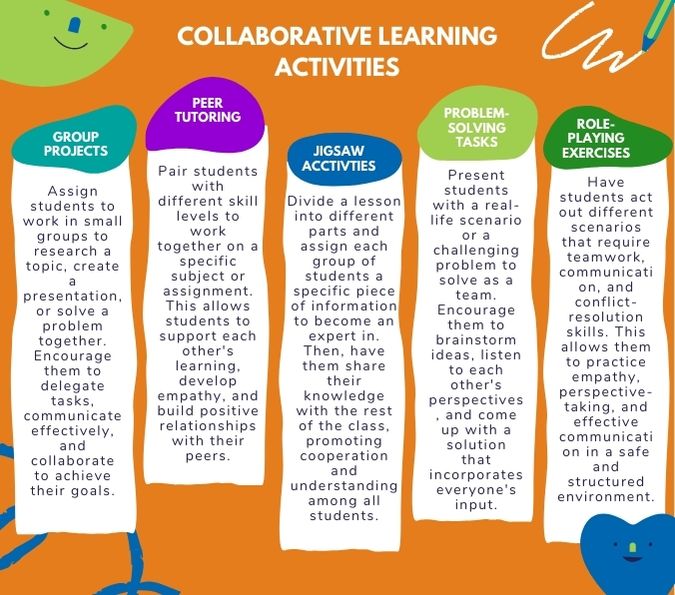 Research indicates that students who engage in social-emotional learning experience substantial improvements in their academic achievements, behavior, and overall well-being. As educators, teachers have a tremendous opportunity to shape the educational, social, and emotional aspects of their students’ lives. By actively promoting social-emotional learning (SEL) in their classrooms, teachers can help develop emotionally intelligent, resilient, and socially adept individuals. Explore practical strategies for implementing SEL principles into daily activities and creating a supportive classroom culture, laying the groundwork for lifelong success and well-being.
Research indicates that students who engage in social-emotional learning experience substantial improvements in their academic achievements, behavior, and overall well-being. As educators, teachers have a tremendous opportunity to shape the educational, social, and emotional aspects of their students’ lives. By actively promoting social-emotional learning (SEL) in their classrooms, teachers can help develop emotionally intelligent, resilient, and socially adept individuals. Explore practical strategies for implementing SEL principles into daily activities and creating a supportive classroom culture, laying the groundwork for lifelong success and well-being.
Cultivate a Safe and Inclusive Classroom Culture
The foundation of social-emotional learning lies in creating a safe and inclusive environment. Teachers can establish ground rules prioritizing respect, empathy, and open communication. By fostering a sense of belonging, students are more likely to feel comfortable expressing their thoughts and emotions, laying the groundwork for SEL.
Cultivating a sense of belonging within the classroom begins with a simple routine of greeting each student individually in the morning. This practice aims to make every student feel recognized and valued.
- To start, address each student by their name. Calling them by their name demonstrates that you remember and value them.
- Making eye contact while greeting students helps establish a genuine connection with them.
- To make the interaction more engaging and welcoming, use friendly nonverbal gestures such as a handshake, high-five, or thumbs-up. These gestures can help students feel more comfortable and open to connecting with you.
- Offer a few words of encouragement to the student, such as “Great job on your last assignment” or “I appreciate your hard work in class.” These affirmations can improve the student’s confidence and motivate them to continue striving for success.
- Lastly, ask the student how their day is going. Inquiring about their day shows that you care about their well-being and allows them to share any challenges or successes they may have experienced.
Model and Encourage Emotional Regulation
Students are always watching and learning from the adults around them. As such, teachers have a unique opportunity to demonstrate emotional regulation skills daily. By modeling positive social and emotional behaviors and attitudes, teachers reinforce the significance of social-emotional learning in everyday interactions. Teachers can use specific strategies to model and encourage emotional regulation, such as:
- Discussing their emotions and how they manage them
- Demonstrating emotional regulation when dealing with stress, setbacks, and conflicts
- Showing effective self-management techniques to demonstrate how students can manage their feelings and set and achieve goals healthily
- Integrating SEL into daily activities to help students learn how to regulate their emotions in various situations
- Acknowledging and validating students’ feelings to help them develop emotional intelligence
- Teaching students mindfulness techniques, such as deep breathing exercises or guided visualizations, to help them calm down and refocus when feeling overwhelmed
By practicing these techniques regularly, students can learn how to regulate their emotions and improve their ability to concentrate and stay engaged in their learning.
Teach and Practice Active Listening
Effective communication is a crucial component of social-emotional learning. Teachers can demonstrate and teach active listening skills explicitly to students. It is essential to encourage students to share their thoughts and feelings while actively listening to their peers. This practice helps to strengthen interpersonal skills and cultivate a sense of empathy and understanding within the classroom community. By providing opportunities for students to engage in open and honest dialogue, they can learn from their mistakes, work through disagreements, and grow from these experiences. Educators can support the overall development of students and equip them with the tools they need to navigate relationships, emotions, and challenges they may face inside and outside the classroom by teaching these skills.

Incorporate Collaborative Learning Activities
Social-emotional learning flourishes in an environment where collaboration is valued. Introduce collaborative learning activities that require students to work together, share ideas, and solve problems as a team. These experiences enhance social awareness and relationship skills and create a sense of camaraderie among students. By incorporating group learning activities into the classroom, students can develop essential skills such as teamwork, communication, empathy, and relationship-building.

Encourage Reflection and Self-Assessment
Integrating opportunities for reflection and self-assessment into classroom routines can help promote self-awareness among students. Encouraging your students to reflect on their emotions, behaviors, and interpersonal interactions can help them gain a better understanding of themselves. By consistently integrating reflection and self-assessment into classroom routines, students can develop greater self-awareness and emotional intelligence. This can benefit their social and emotional development and help them become more mindful and intentional in their actions and interactions.
Establish Regular Check-Ins
Regular check-ins between educators and their students can strengthen their relationships and create a supportive classroom environment. These interactions benefit students and educators, offering valuable insight into each student’s needs. Incorporating SEL check-ins into the classroom routine can positively affect students’ academic performance and well-being. An SEL check-in is a quick 5-10-minute reflection activity that teachers can implement once or twice weekly, allowing students to reflect on their feelings and mental health. These assessments allow educators to gain valuable insight into their students’ well-being.
Check-ins offer the following benefits:
- Provide students with a chance to reflect and assess their progress
- Ensure students feel heard and valued and help increase their sense of belonging in the classroom
- Improve student well-being and academic success as students feel more comfortable expressing their thoughts and concerns
- Aid teachers in identifying students who need additional support
- Create a culture of open communication within the classroom
- Allow teachers to address any issues that may arise through check-ins proactively
- Provide an opportunity for teachers to provide timely interventions to support students’ mental health and academic progress
Integrate Social-Emotional Learning into the Curriculum
Teachers can also incorporate social-emotional learning into the curriculum by integrating self-regulation, social awareness, relationship skills, and responsible decision-making into lessons.
For instance:
- Literature allows students to delve into characters’ emotions, which can help them develop emotional intelligence.
- Historical events help students understand the experiences and perspectives of those who lived through them when viewed through an empathy lens.
- Science experiments are an excellent opportunity to promote teamwork and collaboration while fostering critical thinking and problem-solving skills.
By embedding social-emotional learning in this way, educators can create a more comprehensive learning experience that prepares students for academic success and positive outcomes in their personal lives. This approach nurtures empathy, resilience, and community within the classroom. Students can see the relevance of these skills in multiple contexts and understand their importance in all aspects of life.
Implement Social-Emotional Learning Resources and Programs
SEL programs and resources are designed to support teachers in cultivating social-emotional skills. These programs provide structured activities, lesson plans, and materials that align with the core SEL competencies. Teachers can use these resources to enhance the depth and breadth of social-emotional learning experiences in the classroom. In addition to these structured programs, teachers can find many resources online and in books to support their efforts in promoting social-emotional skills. Using these programs and resources, teachers can create a supportive and inclusive classroom environment that fosters their students’ social-emotional growth.
